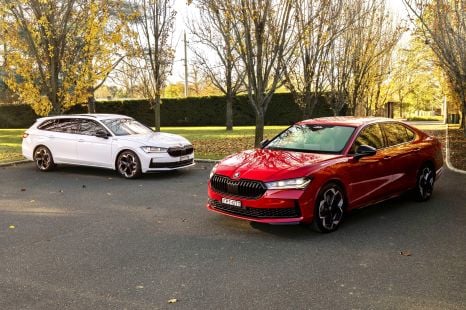

Max Davies
2025 Skoda Superb Sportline review
2 Months Ago
BMW's GTI fighter is a solid contender in the FWD hot hatch segment but it just cannot match its RWD predecessor's character.
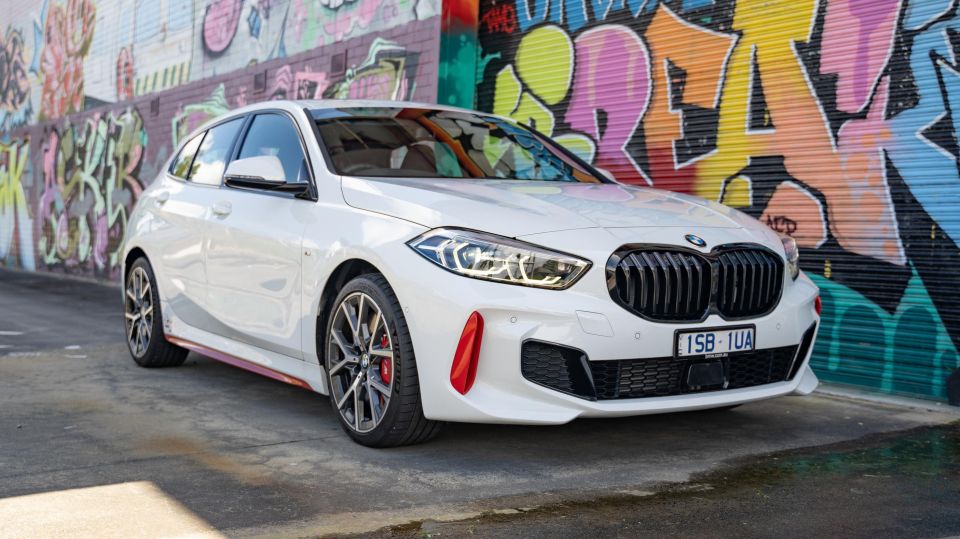


Marketplace Editor
New from
$46,990
excl. on-roads

Marketplace Editor
New from
$46,990
excl. on-roads


Marketplace Editor
New from
$46,990
excl. on-roads

Marketplace Editor
New from
$46,990
excl. on-roads
Quickly see how this car stacks up against its competition. Select any benchmark to see more details.
Where expert car reviews meet expert car buying – CarExpert gives you trusted advice, personalised service and real savings on your next new car.
BMW is a brand known for its sporty executive sedans and even sportier coupes, offering engaging dynamics and the classic rear-wheel drive layout.
So, you can imagine the world’s surprise when the 1 Series hatchback, which was unique in its segment for offering the rear-drive in its first two generations, switched to a front-drive platform shared with the Mini line-up, as well as the X1 SUV.
In 2021 BMW decided to go after the world’s front-drive hot hatches with the new 128ti – think Ford Focus ST, Hyundai i30 N, Renault Megane RS, and the Volkswagen Golf GTI – reviving the Turismo Internazionale badge that dates back to the 1960s.
Billed as “the new compact sports car”, the 128ti aims to offer the fun-to-drive elements of a front-drive hatchback with the engaging feel and premium features expected of a BMW.
As a Mk7.5 VW Golf GTI owner myself, I figured I was well placed to see if the 2022 BMW 128ti can hold a candle to the established mainstream hot hatch players while also upholding the values the famed Bavarian marque is known for. Tough gig.

At $55,031 before on-road costs, the auto-only BMW 128ti is surprisingly well-placed against mainstream competition, and significantly undercuts entry-level performance products from rival premium brands.
The facelifted Ford Focus ST X will start at $51,990 when it lands in the second quarter of 2022, and the top-of-the-range Hyundai i30 N Premium DCT hatchback asks for $52,000. All prices exclude on-road costs.
Further, the Renault Megane RS Trophy with the optional dual-clutch auto transmission costs $56,990 plus on-roads, and the Mk8 Volkswagen Golf GTI lists for $54,490.
It’s worth noting, however, these mainstream-branded rivals have more substantial feature lists, particularly from a driver assistance perspective. Part of the premium buying experience is ticking options boxes and tailoring your vehicle to your tastes.
Our test car featured a number of options, including leather trim, a panoramic sunroof and a premium harman/kardon sound system, as well as the Comfort Package, bringing the as-tested sticker to $63,473 before on-road costs.




BMW 128ti highlights:


That’s on top of the 118i’s specification, which includes:
A number of extra-cost options and packages are available depending on variant: including paints, trims, upholstery and additional equipment.

Specific to the 128ti, the following packs are available:
Enhancement Package – $3000
Comfort Package – $1023
Convenience Package – $1077
Executive Package – $2000
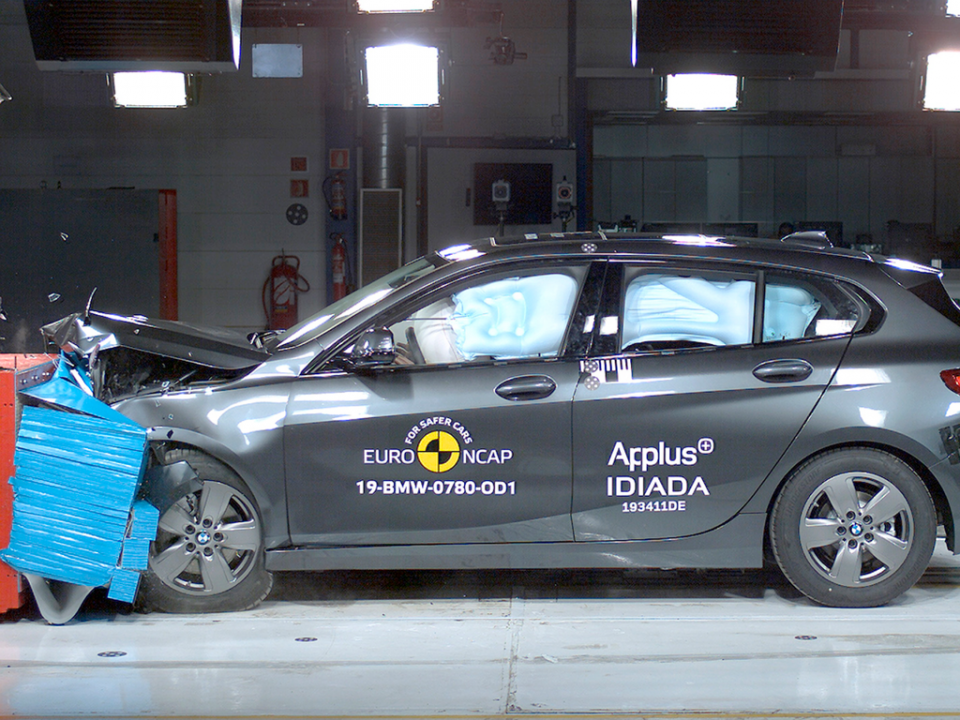
The BMW 1 Series scored a five-star ANCAP safety ratingin 2019 based on tests conducted by Euro NCAP.
It received 83 per cent for adult occupant protection, 89 per cent for child occupant protection, 76 per cent for vulnerable road user protection, and 73 per cent for safety assist.
All 1 Series variants come standard with the following:
The above forms the basic Driving Assistant package that’s standard across the range. Adaptive cruise control with stop/go is available as an option, as is tyre pressure monitoring – but features like lane-keep assist and lane centring continue to be absent from the features and options list, despite being offered by rivals.
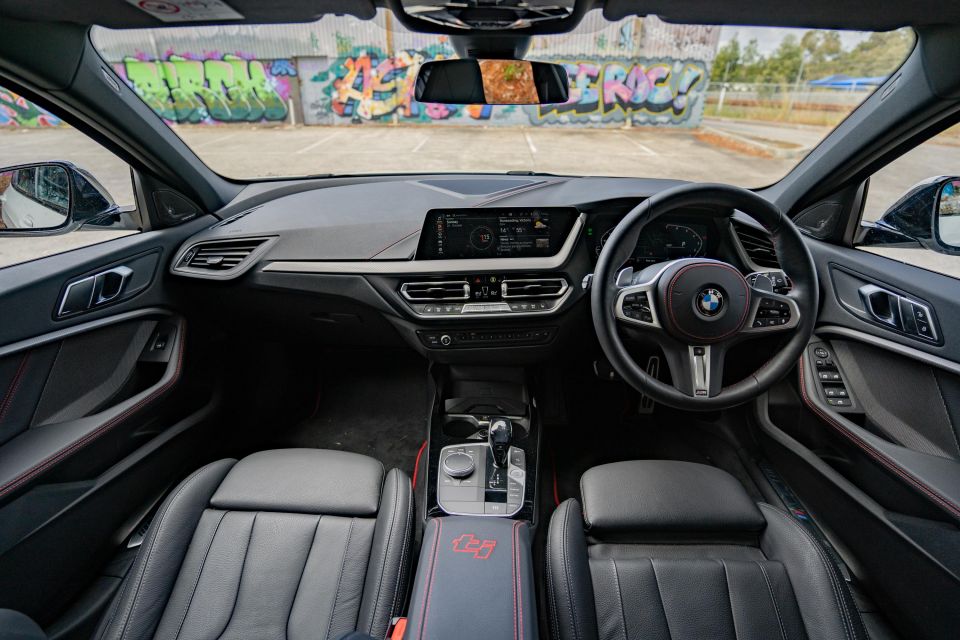
Where the current 1 Series is a cut above its competition is interior layout and execution. BMW’s designers have nailed cabins across its latest range.
From the expansive use of high-quality soft-touch materials, the chunky M leather steering wheel, the figure-hugging sports seats, to BMW’s excellent OS7.0 infotainment system, the 128ti and the wider 1 Series range feels properly high end.
In the 128ti you get red stitching and ‘ti’ insignia, reminding you that you got the enthusiast’s car.
One thing I love about premium Euro vehicles is the extendable thigh cushions for the front seats. As a lanky guy measuring over 6’1 having that extra support over longer stints behind the wheel is welcome.


You really sit ‘in’ the 1 Series which gives you a more sporting feel from the moment you get in. Adjusting the driver’s seat (electric) and the steering wheel (manual) is precise, and there’s a wide range of movement so people of all shapes and sizes can get comfy.
Storage is pretty good up front, with toothed cup holders, a slot for your phone, big door bins and a deep centre cubby under the armrest giving you plenty of options.
Infotainment is yet another strong point of the 1er’s cabin, with BMW OS7.0 providing an upmarket and sophisticated interface which is not only easy to use but quick to respond, pretty to look at, and well featured.
Wireless Apple CarPlay worked perfectly during our time with the 128ti, and the optional harman/kardon 16-speaker premium sound system offered crisp, deep sound.
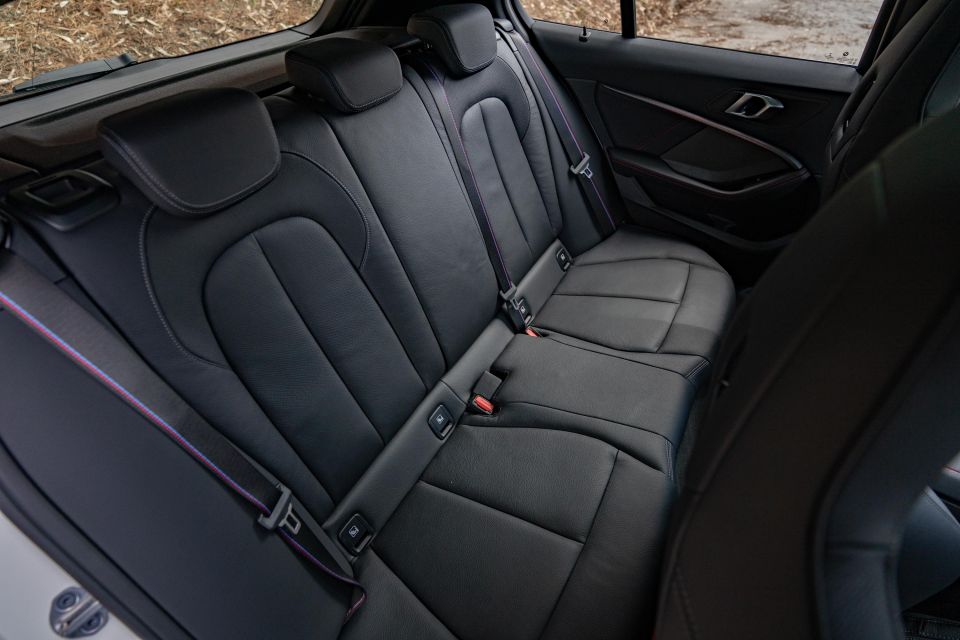
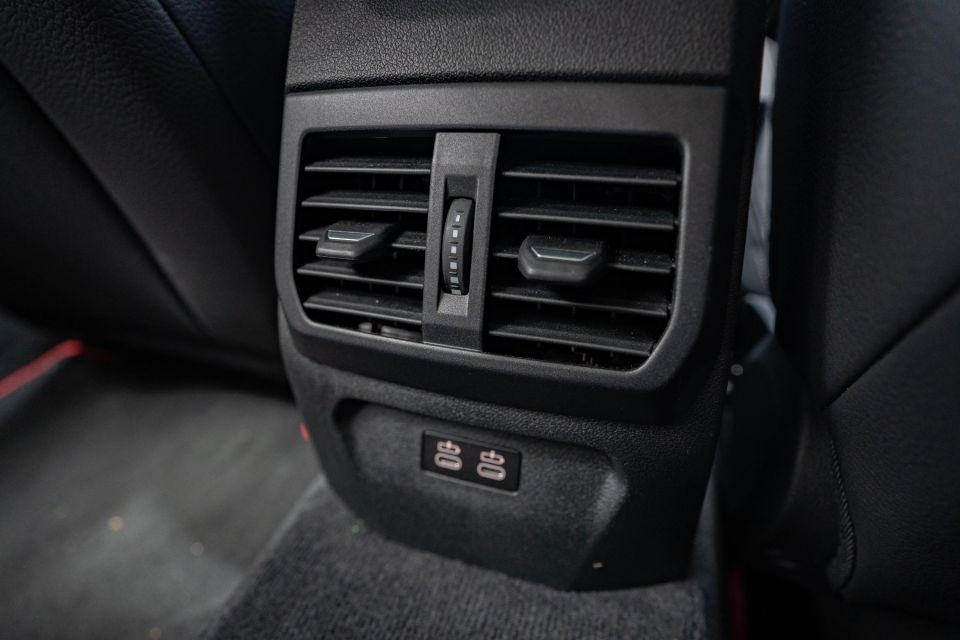
One of the benefits of the switch from a rear-drive platform to a front-drive one is the improvements made to rear-seat and luggage space.
Where the previous 1 Series was so tight adults basically needed to be legless to be comfortable, this new one offers as much space as an A3 or Golf in the back seat. Four adults can be carted around in comfort, no dramas.
There’s rear vents and two USB-C charge ports, as well as map pockets behind the front seats and bottle holders in the rear doors. It’s only really missing a fold-down centre armrest.
Parents can also make use of the ISOFIX anchor points on the outer seat positions as well as the top-tether points for all three rear seats.
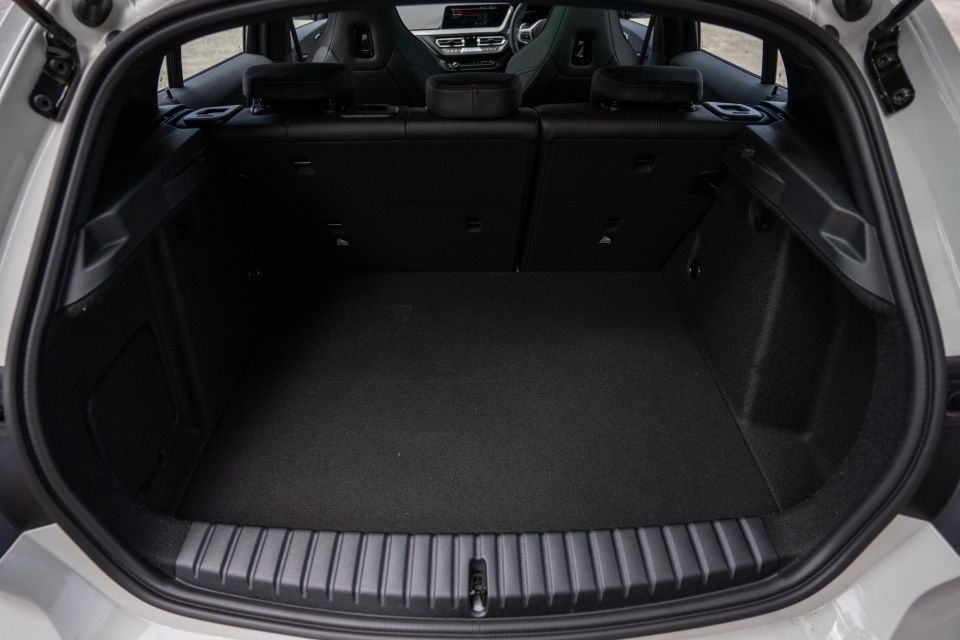
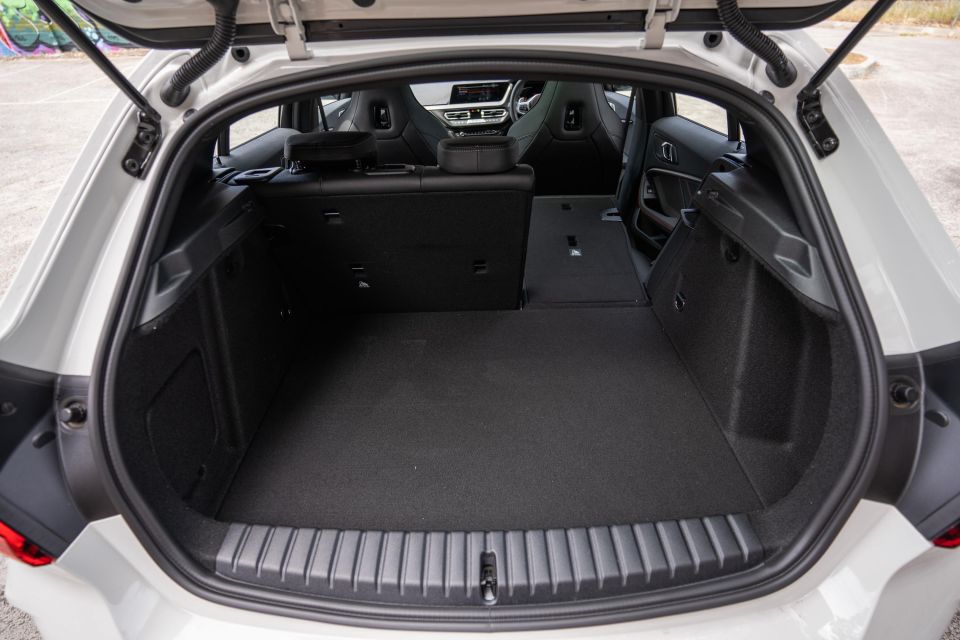
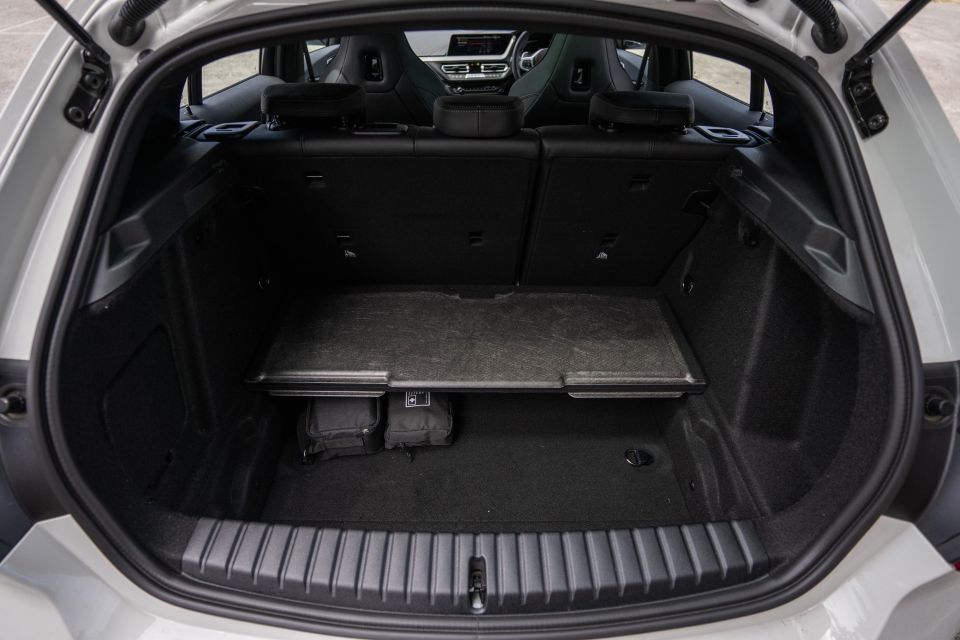

The boot measures 380L with the second row in place, expanding to 1200L with the rear bench folded.
It’s par for the class, even with the likes of the Golf (380L) and A-Class (370L).
The space itself is wide and square, and there’s not much lip to lift things over once you get past that chunky rear bumper. The modular floor also means you can store stuff out of sight under the load area.
BMW doesn’t fit the 128ti with a spare wheel; instead there’s a tyre repair kit.

Power in the BMW 128ti comes from a 2.0-litre turbocharged four-cylinder petrol engine, shared with a number of BMW and Mini models including the higher-spec M135i xDrive.
Outputs in this trim are quoted at 180kW (6500rpm) and 380Nm (1500-4400rpm), with drive sent to the front axle via an eight-speed automatic transmission with paddle shifters sourced from Aisin, as well as a mechanical limited-slip differential.
BMW claims the 128ti will dash to 100km/h from standstill in 6.3 seconds and hit a top speed of 243km/h. Its acceleration claim is 0.1s quicker than the figure quoted by the VW Golf GTI, though it’s slower than both the Ford Focus ST (5.7 seconds) and Renault Megane RS Trophy (5.7 seconds).
In terms of fuel consumption, the 128ti uses a claimed 6.8L/100km of 98 RON premium unleaded. The fuel tank measures 50 litres.
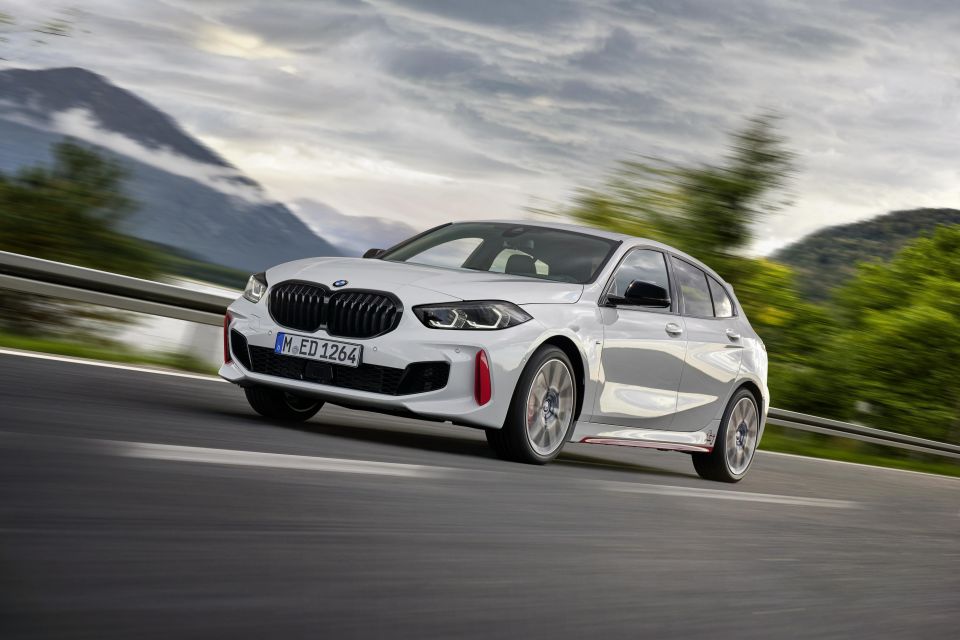
Fire up the 128ti and you get a brassy growl that’s reminiscent of the Mini JCW range, but not quite as raucous.
Like I found in my time with the M135i xDrive, the performance versions of the 1 Series do drive and handle well objectively, but don’t necessarily have that BMW flavour that gave the old one such a point of difference.
The 2.0-litre turbo and eight-speed auto are a good pairing, shifting snappily on the move and allowing good control via the steering-mounted paddles.
Performance from the turbo’d four is strong, and the beefy mid-range means you can ride the 128ti’s torque band (380Nm on tap from 1500-4400rpm) making it a pretty effortless everyday driver. It also means it has plenty of shove when you’re giving it a go.
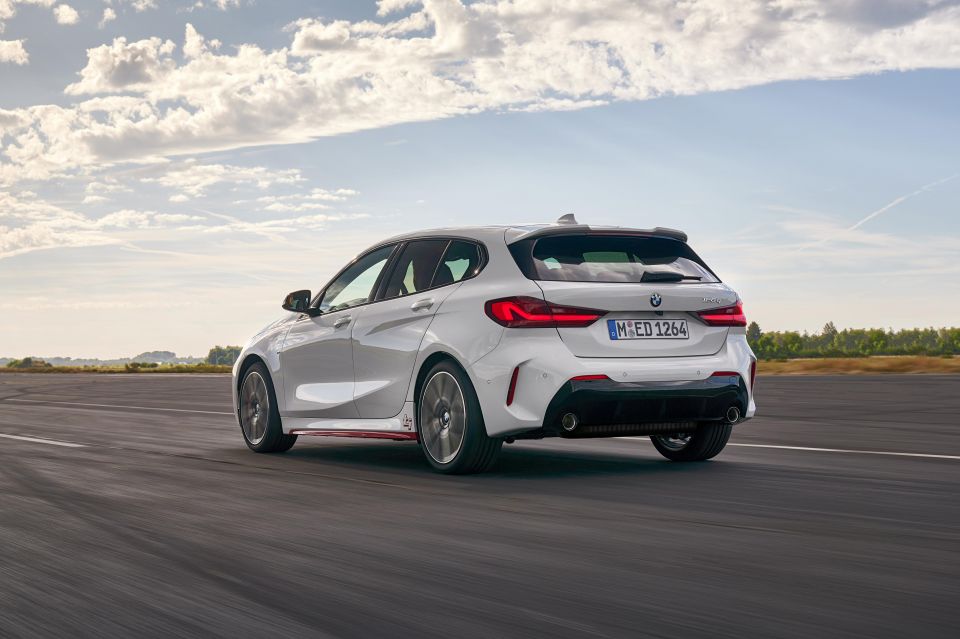
A claimed 0-100 time of 6.3 seconds is nothing to sneeze at, but what really matters in cars like this is rolling acceleration. Like my GTI, the 128ti feels very quick on the move, and the engine is super responsive across the rev band.
What isn’t so great is the occasional low-speed behaviour of the transmission, which I’ve noted countless times with BMW’s eight-speeders. It never seems to respond how you want it to, either being too lazy or too eager.
Further, the ride is quite choppy even by hot hatch standards. You feel every road imperfection and undulation, and it’s ‘engaging’ or ‘connected’ until it becomes tiresome and annoying. It’s not completely crashy but a layer of adjustability to the M Sport suspension in the form of adaptive damping would be welcome.
The handling is quite sharp thanks to quick, direct steering and a taut chassis that suppresses body roll well. Really, that’s the positive trade-off of the firm ride we spoke about earlier.
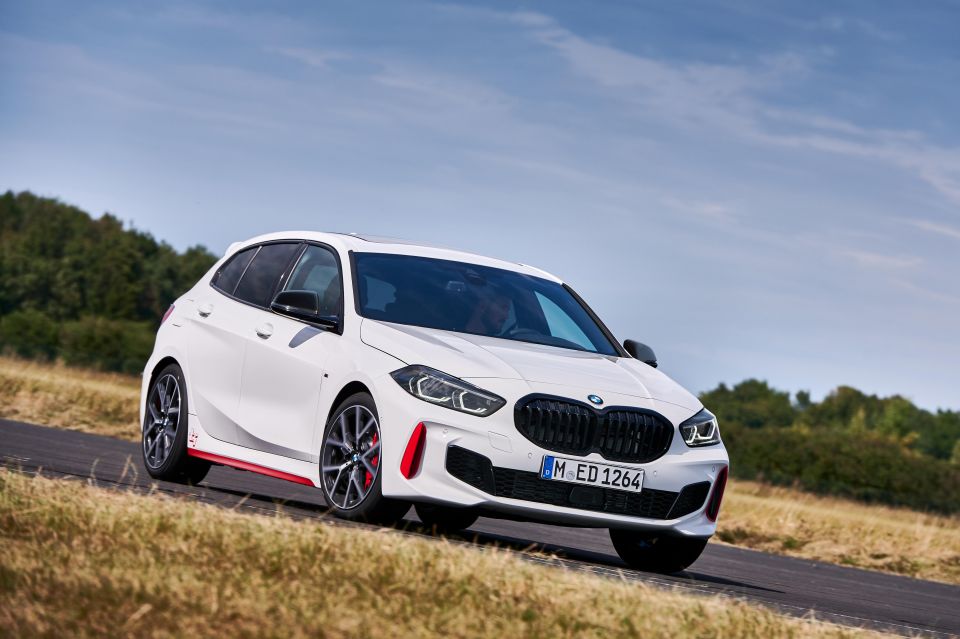
Where expert car reviews meet expert car buying – CarExpert gives you trusted advice, personalised service and real savings on your next new car.
The 128ti has typical front-drive hatchback traits, meaning the wheels will spin off the line and in corners you have to work with that mechanical front diff to get the best out of corner exit. You’ll have to push it hard to get it to understeer, although it’s never overly adjustable.
I also wasn’t super fond of how the car sounded inside, as BMW has the habit of over-synthesising the engine noise through the speakers. Listen to the exhaust from the outside and it sounds grouse, but inside there’s so much fake noise (particularly in the sportier modes) that feels all a bit gimmicky.
The 128ti doesn’t make the cracks and pops on upshifts like you get in the M135i or in the Mini JCW Hatch. Call me immature or a hooligan, but I like those sounds as you pull a paddle. There’s a bit of overrun when you have it in Sport though, which is cool.
Refinement is typical entry-level Euro, in that it’s quiet and insulated over smooth bitumen, but the ambience can be upset by tyre roar over the rougher stuff. It’s a complaint I’ve made many a time about BMW’s UKL-based cars, as this platform seems to lack the insulation of even Volkswagen’s MQB products.

Combined with the terse ride, some may find the 128ti a little too raw for a product with a premium badge… while others may prefer it that way.
As for driver assistance, the 1 Series again misses out on some of the features offered elsewhere in the BMW range due to its Mini underpinnings, namely a semi-autonomous highway driving system and proper lane-keep assist.
The Steering and Lane Control Assistant in everything from the 3 Series and up is in my opinion one of the most intuitive Level 2 semi-autonomous assistance systems in the game, and it’s a shame the 1 Series is on the back foot compared to basically everything else in the class.
Sure, a keen driver will likely want an uninhibited drive experience, but that’s not to say many wouldn’t appreciate the benefits in everyday use. The optional adaptive cruise control works well enough, with its main drawback being that it is indeed, optional.

As with the wider BMW line-up, the 1 Series is covered by a three-year, unlimited-kilometre warranty that’s behind an increasing amount of rival brands in both the mainstream and premium segments.
Audi and Mercedes-Benz have moved to longer five-year coverage, matching the likes of Ford, Renault and Volkswagen.
The company offers five-year Service Inclusive maintenance plans, with the ‘Basic’ package retailing for $1700 (1 Series, 2 Series) covering the first 60 months or 80,000 kilometres.
We saw real-world fuel consumption in the mid-8.0L/100km region (indicated) with a mix of commuting as well as extended freeway stints and enthusiastic B-road runs. Not bad, really.
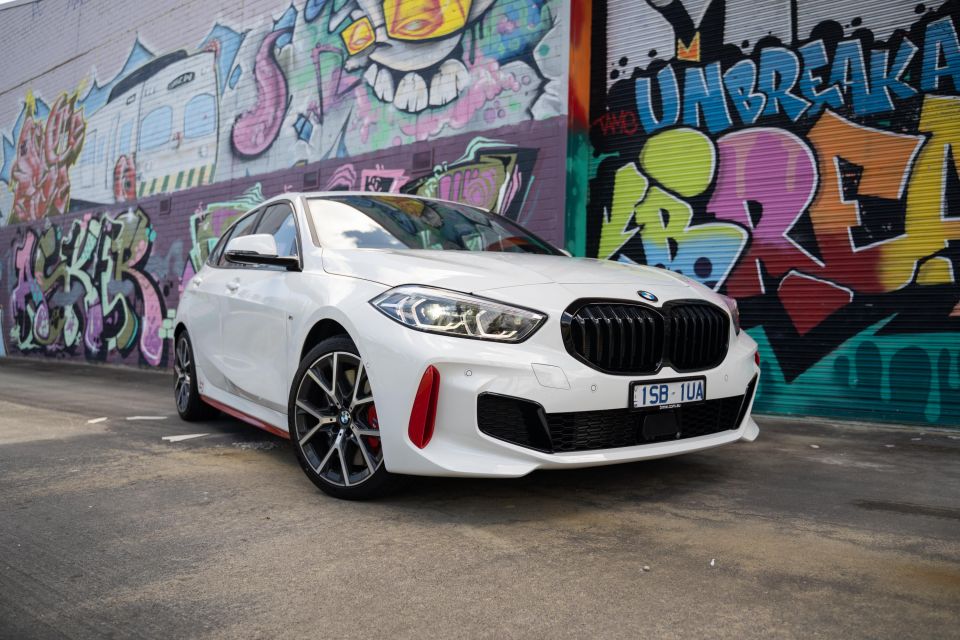
Following a warm reception from overseas media, I thought the 128ti might be the breakout star of the new 1 Series range. Unfortunately, I was a little underwhelmed.
The front-drive fast 1er may be more engaging than the M135i but it still lacks a distinct flavour compared to competing front-drive hot hatches, at least in my humble opinion.
In isolation it’s a fun, sporty little hatchback, and it retains core BMW strengths like interior quality, comfort and interior technology. The fact it’s a good $7000 cheaper than the M135i xDrive Pure also sweetens the deal.
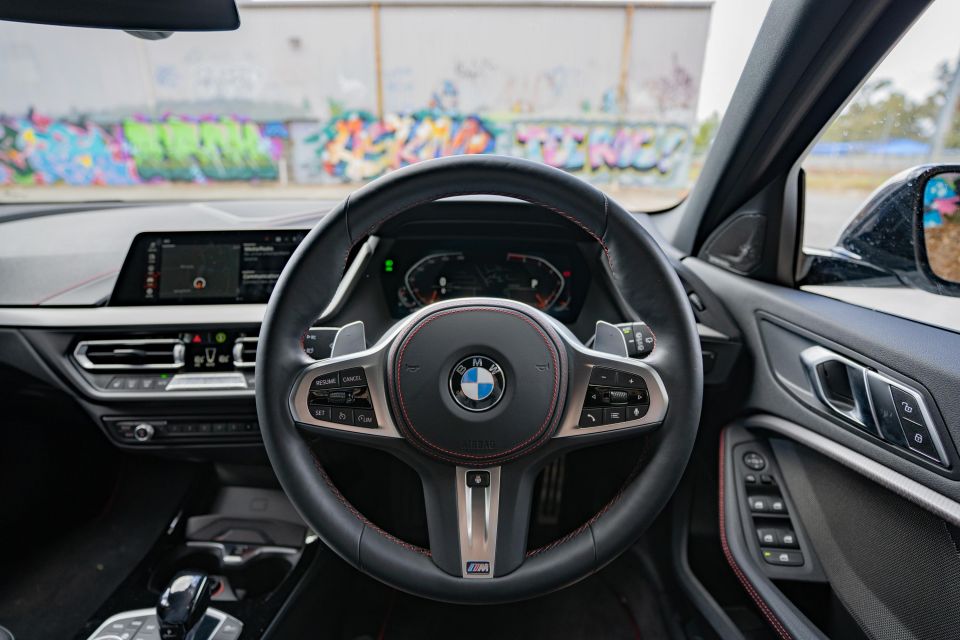
However, it’s let down by somewhat expensive options, a ride that may be too firm for some in daily use, and the fact that enthusiasts like myself will always lust for a rear-drive BMW driving experience. Again, this feels more like a big Mini and less like a small BMW to drive.
That’s not to say its not fast and fun, but that can be said for just about every front-drive hot hatch at this end of the market. The Ford Focus ST is arguably just as focused and packs a lot more technology as standard, while the Golf GTI is more comfortable day to day with similar performance.
Call me a tough critic, but while the 128ti is arguably the pick of the 1 Series line-up it doesn’t move the game forward enough in terms of luxury or performance to really make its mark on the segment. Still, a decent effort.

Click the images for the full gallery by Wesley Loh (@garagetribe on Instagram)
MORE: Everything BMW 1 Series
Where expert car reviews meet expert car buying – CarExpert gives you trusted advice, personalised service and real savings on your next new car.
James is an automotive journalist based in Melbourne, Australia. Before joining CarExpert.com.au in 2020, James has worked at leading auto media outlets including Carsales and CarAdvice, as well as at Pulse agency for Ford Australia's communications team. In 2019 James made Mumbrella's 'Top 20 most prolific web authors in Australia' list after publishing 1,360 articles between March 1, 2018 and February 28, 2019 for CarAdvice. James is also an Ambassador for Drive Against Depression – an Australian charity whose mission is to support mental wellness through the freedom of driving and a shared love of cars.


Max Davies
2 Months Ago
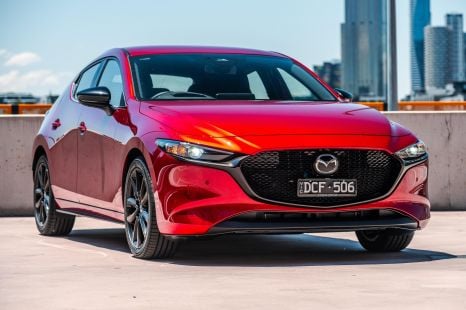

Josh Nevett
2 Months Ago
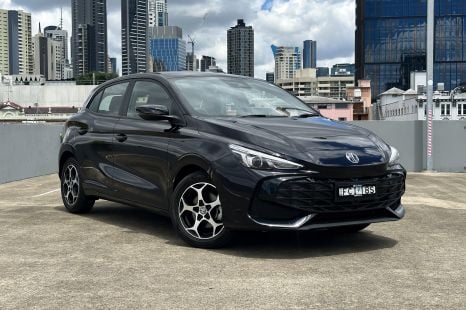

William Stopford
2 Months Ago


Josh Nevett
1 Month Ago


Josh Nevett
1 Month Ago


Matt Campbell
1 Month Ago